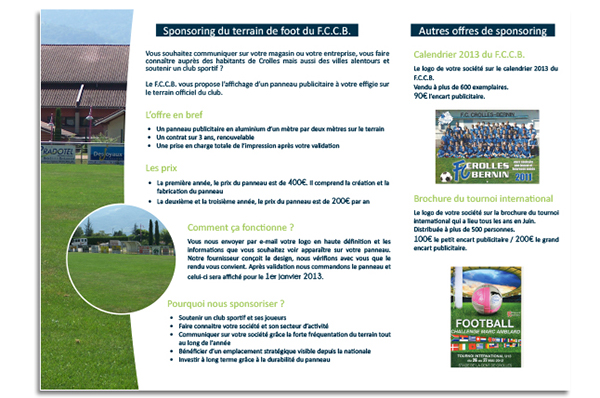Contents:


Generally speaking, a ratio of less than 1 can indicate future liquidity problems, while a ratio between 1.2 and 2 is considered ideal. If the ratio is too high (i.e. over 2), it could signal that the company is hoarding too much cash, when it could be investing it back into the business to fuel growth. This is monitored to ensure that your business has sufficient working capital in every accounting period, so that resources are fully utilized, and to help protect the company from experiencing a shortage in funds. The Cash Conversion Cycle will be a better measure to determine the company’s liquidity rather than its working capital ratio. An excessive Net Working Capital indicates that more funds are kept idle for a long period of time.
It helps to maintain the smooth operation of the business and helps in improving profitability and earnings. Using aforecasting toolcan help your team maximize revenue throughout the sales-to-revenue process which will have a direct impact on working capital as the month progresses. With NetSuite, you go live in a predictable timeframe — smart, stepped implementations begin with sales and span the entire customer lifecycle, so there’s continuity from sales to services to support. For example, a retailer may generate 70% of its revenue in November and December — but it needs to cover expenses, such as rent and payroll, all year. Financing expenses are excluded from the calculation of the working ratio though they have to be borne by the company and affect its sustainability.
Tipos de ratios financieros
A ratio lower than 2 indicates the company is not in a position to pay its creditors within one year. Working Capital meaning is the cash required to meet the company’s short-term expenses. Therefore, the funds that are required by a company to meet its short-term expenses are known as ‘Working Capital’.

Managing working capital with accounting software is important for your company’s health. Positive working capital means you have enough liquid assets to invest in growth while meeting short-term obligations, like paying suppliers and making interest payments on loans. This increases current assets by adding to the company’s available cash but doesn’t overly increase current liabilities.
Importance of Using the Working Capital Formula
It reflects what extent the company’s revenue can cover its operating expenses. A ratio below one indicates that the company can recover its operating expenses through its gross revenue. On the contrary, a ratio above one indicates that the company cannot meet its operating expenses through its gross revenues. Many businesses incur expenses before receiving money back from sales.
Bank OZK: A Hilltop View In Financials (NASDAQ:OZK) – Seeking Alpha
Bank OZK: A Hilltop View In Financials (NASDAQ:OZK).
Posted: Thu, 13 Apr 2023 08:58:32 GMT [source]
Effective working capital management enables the business to fund the cost of operations and pay short-term debt. The net working capital ratio measures the liquidity of a business by determining its ability to repay its current liabilities with its current assets. The rapid increase in the amount of current assets indicates that the retail chain has probably gone through a fast expansion over the past few years and added both receivables and inventory. The sudden jump in current liabilities in the last year is particularly disturbing, and is indicative of the company suddenly being unable to pay its accounts payable, which have correspondingly ballooned. The acquirer elects to greatly reduce her offer for the company, in light of the likely prospect of an additional cash infusion in order to pay off any overdue payables.
Reasons your business may require additional working capital
Accordingly, Net Working Capital showcases the ability of your business to pay off its liabilities in a short period of time. To recap, current assets include cash and assets that will be converted into cash within 12 months and current liabilities are bills that must be paid within 12 months. Financial health, and its liquidity—the ability to generate sufficient current assets to pay current liabilities. Though working capital is an easy calculation, the number can tell you a lot about the health of your business. For instance, a working capital ratio of less than one indicates that your business is facing severe liquidity issues and does not have enough current assets to pay current liabilities.
They have a working capital ratio of 0.75, and their current assets stand at $1,475,000. Using the formula in the other direction, it can be determined that the current liabilities for the company total $1,106,250. This is not as bad as a negative ratio, but this does mean that they may not be as able to produce liquid cash quickly if the need arises.
Significance and Use of Working Capital Formula
So, you may ask your debtors to pay within days depending on the industry standards. Remember, you need to reduce the time period between completing production and sending invoices to your customers. Further, excessive investment in your current assets may diminish your business profitability. Therefore, it is important for you to determine the optimal level of working capital. This can be done by achieving a trade-off between liquidity and profitability.
A positive working capital shows a well-positioned company where its current assets can cover all the current liabilities. It also positions the company for conducting further expansion investments. On the other hand, a much bigger net working capital than similar companies might indicate a lack of room for growth. Analysts and lenders use the current ratio as well as a related metric, the quick ratio, to measure a company’s liquidity and ability to meet its short-term obligations.
Oakmark International Fund: First Calendar Quarter 2023 – Oakmark … – The Oakmark Funds
Oakmark International Fund: First Calendar Quarter 2023 – Oakmark ….
Posted: Fri, 31 Mar 2023 07:00:00 GMT [source]
Liquidity ratios are a class of financial metrics used to determine a debtor’s ability to pay off current debt obligations without raising external capital. Current liabilities are simply all debts a company owes or will owe within the next twelve months. The overarching goal of working capital is to understand whether a company will be able to cover all of these debts with the short-term assets it already has on hand. Products that are bought from suppliers are immediately sold to customers before the company has to pay the vendor or supplier.
Common Drivers Used for Net Working Capital Accounts
In contrast, a work in process has negative working capital if it doesn’t have enough current assets to cover its short-term financial obligations. A company with negative working capital may have trouble paying suppliers and creditors and difficulty raising funds to drive business growth. A company has positive working capital if it has enough cash, accounts receivable and other liquid assets to cover its short-term obligations, such as accounts payable and short-term debt.
- Working capital is also a measure of a company’s operational efficiency and short-term financial health.
- Thus invest in companies with lower working capital cycles if all other metrics are strong.
- In these cases, you may need to plan for ensuring extra capital during leaner times.
- Bonds, stocks and properties are some examples of illiquid investment.
- The working capital metric is particularly important to potential investors and financial institutions that you may be looking to do business with.
- Working capital is important because it is necessary for businesses to remain solvent.
Are generally payable in a month’s time, such as a salary, material supply, etc. However, these ratios generally differ with the industry type and will not always make sense. If this ratio is greater than 2 – the Company may have excess and idle funds that are not utilized well.

The working capital https://1investing.in/ subtracts your current liabilities from your current assets in order to measure available funds for operations and growth. A positive number means you have enough cash to cover short-term expenses and debts, whereas a negative number means you’re struggling to make ends meet. Current assets include cash and assets that will be converted into cash within 12 months. On the other hand, current liabilities are bills that must be paid within 12 months, including accounts payable, short-term debt, and the current portion of long-term debt. A business has $100,000 of cash, $250,000 of accounts receivable, and $400,000 of inventory, against which are offset $325,000 of accounts payable and $125,000 of the current portion of a long-term loan.
The Net Working Capital Formula and the Working Capital Ratio Formula are the easiest ways to determine whether your business has the cash flow necessary to meet your debt and operational demands over the next year. To be considered “current”, these liabilities and assets must be expected to be paid or accessible within one year . However, such comparisons are meaningless when working capital turns negative because the working capital turnover ratio then also turns negative. A company with a ratio of less than 1 is considered risky by investors and creditors since it demonstrates that the company may not be able to cover its debts, if needed. Current assets are assets that a company can easily turn into cash within one year or one business cycle, whichever is less.